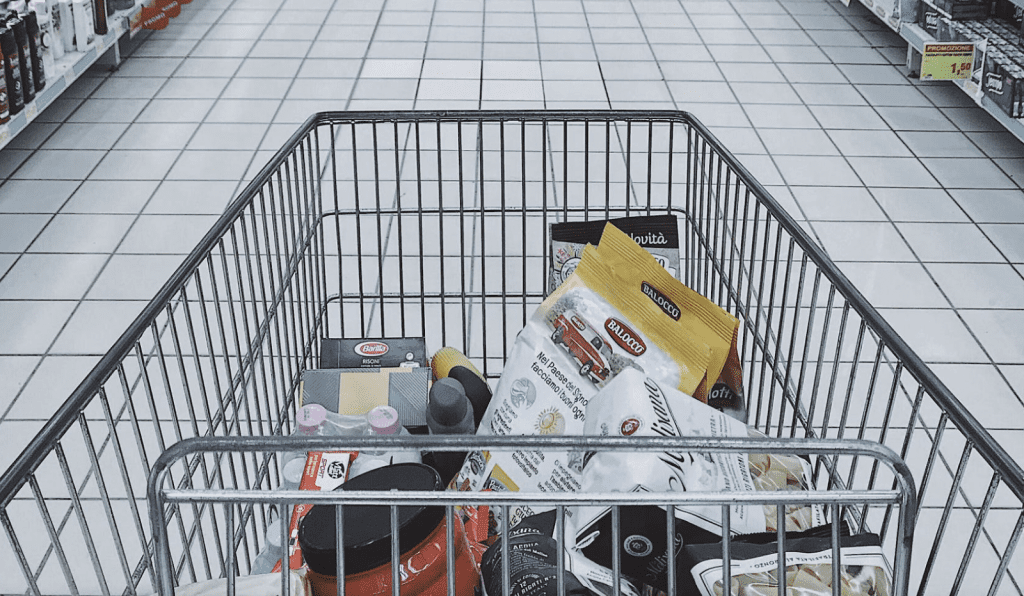Even before the Covid-19 pandemic, people were buying groceries online, but the outbreak spurred this trend, making it widespread, especially in regions that went under strict lockdowns.
The online grocery services grew beyond anyone’s expectations as tens of millions of people bought groceries through phone apps and websites for the first time. As vaccines are rolling out, people are more comfortable heading out to stores.
Yet, online grocery shopping remains one of the fastest-growing ecommerce trends 2021. Thus, it’s evident that what the pandemic pushed as a trial or necessity is now becoming a consumer habit.
Let’s take a closer look at the rise of online grocery services and why it’s here to stay.

How Did The Pandemic Affect Online Grocery Sales?
According to Emarketer, online grocery sales reached a whopping $95.82 billion in 2020, which is an impressive 54% rise. Owing to this spur, it accounted for 7.4% of grocery sales and 12% of all US ecommerce sales.
The senior forecasting analyst at Emarketer, Whitney Birdsall, says the pandemic urged consumers to find a convenient and safe way for getting their grocery items. Looking at this, retailers offered services that would meet this demand.
Now, many stores are giving curbside pick-up to their consumers. Meanwhile, others have grocery delivery apps, giving consumers a number of easy ways to get their groceries.
In fact, many people who bought their groceries online for the first time ever due to the pandemic now consider this method more convenient than traditional grocery shopping.
Online Grocery Shopping Is Here To Stay
With mass vaccination, one would expect online grocery sales to go down. However, the statistics reflect quite the opposite as experts forecast the sales to put $100 billion in 2021.
Additionally, Emarketer estimates online grocery sales will account for 11.2% of all grocery sales in the US.
While it’s true that the growth of this industry will be slower, it will still make a major portion of the national grocery and ecommerce sales.

First-Time Buyers Are Driving Online Grocery Shopping
Experts believe that the growth of online grocery shopping is primarily due to the influx of first-time shoppers in this sphere. In 2022, the number of people who buy their groceries online went up to 131.6 million, making up 42.5% of all shoppers in the US.
Moreover, Emarketer forecasts this figure will go up to 51.3% by 2022.
The principal analyst at Emarketer, Andrew Lipsman, says that some buyers will go back to their old shopping behaviors once the pandemic is over. However, others have become accustomed to the idea of shopping online, so they will still do it occasionally.
Likewise, people who have developed a habit of shopping for groceries online and found it more convenient will continue to opt for digital grocery shopping. As new shoppers enter the market, the growth of digital grocery will see a rise.
Along with the number of people buying groceries online, the spending per consumer will also increase. A shopper, on average, was spending $728 on online groceries in 2020. Meanwhile, the figure rose to $818 in 2021 and is expected to be over $1000 in 2023.
How Are Online Grocery Services Shaping Trends?
Online grocery services, like Amazon Fresh, are not only driving retail spending but are also shaping other trends, such as those discussed below.
Partnerships Between Companies
Instead of developing their own apps and spending huge sums on marketing, major convenience stores and retail corporations are partnering with food delivery apps that are already popular among consumers.
For instance, Walgreens partnered with DoorDash while Target is now working with Shipt – a delivery service – to ensure a seamless digital grocery experience for customers.
Similarly, food apps, such as Uber Eats, are also partnering with grocery platforms for the same reason. For example, Uber Eats and Cornershop – a grocery delivery service – work together to provide consumers with an all-in-one food solution.
App Development
Some grocery stores and supermarkets are also developing apps to make the shopping experience a breeze for customers. For instance, Kroger has a phone app that customers can use to place their orders.
Similarly, Walmart has a Walmart Grocery app that they have combined with their main app. It offers customers ease of shopping from different departments in the same app.
Innovative Delivery Services
Previously, consumers only had two solutions: pick up from the store or get the food delivered to their doorstep.
However, with the pandemic, supermarkets started offering other services, such as curbside pick-ups and same-day deliveries.
Some stores are even offering deliveries on the same day or just in a few hours. Meanwhile, others are providing contactless pick-ups to customers, keeping their convenience and safety in mind.
Earlier in March this year, the delivery and pick-up grocery sales grew to $7.1 billion, which is a 16.4% increase. On the other hand, doorstep delivery rose by 16.7%, coming up to $2.1 billion.
It’s evident that customers love the idea of quick deliveries. Instacart experimented with the delivery timings. They offered 2-hour, 5-hour, and extended delivery options to the consumers. Around 85% of the shoppers opted for the 2-hour duration.

Post Pandemic: What Does The Future Hold?
Digital grocery shopping is one of the most impressive ecommerce trends 2021. But, will it still be as big as it is now once the pandemic ends? Well, it seems so. A Harris Poll report showed that 77% of the people who bought groceries online in 2020 planned on doing it in the future too.
It’s not unlikely for most people to go back to in-store shopping. But digital grocery shopping has become a habit for many, especially millennials and Gen-Z.
Interestingly, it’s not only the younger lot that can benefit from digital grocery services. Some companies, such as Instacart, are also targeting seniors. Instacart has a Senior Support Service to help senior citizens place online orders, bringing them in the loop to increase their sales.
As companies keep coming up with innovative and inclusive solutions like this, online grocery retail spending is bound to increase.

